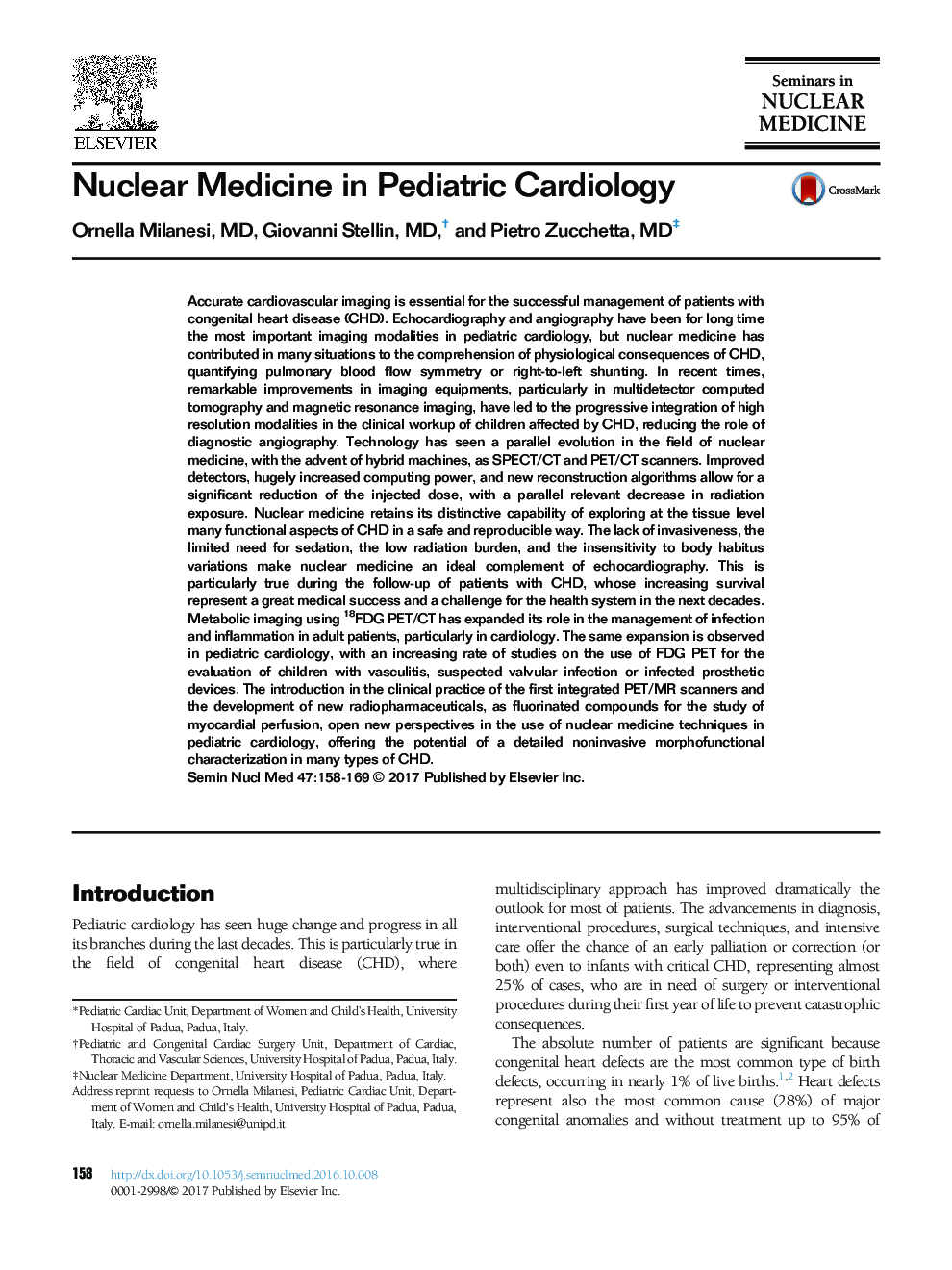| Article ID | Journal | Published Year | Pages | File Type |
|---|---|---|---|---|
| 5728345 | Seminars in Nuclear Medicine | 2017 | 12 Pages |
Accurate cardiovascular imaging is essential for the successful management of patients with congenital heart disease (CHD). Echocardiography and angiography have been for long time the most important imaging modalities in pediatric cardiology, but nuclear medicine has contributed in many situations to the comprehension of physiological consequences of CHD, quantifying pulmonary blood flow symmetry or right-to-left shunting. In recent times, remarkable improvements in imaging equipments, particularly in multidetector computed tomography and magnetic resonance imaging, have led to the progressive integration of high resolution modalities in the clinical workup of children affected by CHD, reducing the role of diagnostic angiography. Technology has seen a parallel evolution in the field of nuclear medicine, with the advent of hybrid machines, as SPECT/CT and PET/CT scanners. Improved detectors, hugely increased computing power, and new reconstruction algorithms allow for a significant reduction of the injected dose, with a parallel relevant decrease in radiation exposure. Nuclear medicine retains its distinctive capability of exploring at the tissue level many functional aspects of CHD in a safe and reproducible way. The lack of invasiveness, the limited need for sedation, the low radiation burden, and the insensitivity to body habitus variations make nuclear medicine an ideal complement of echocardiography. This is particularly true during the follow-up of patients with CHD, whose increasing survival represent a great medical success and a challenge for the health system in the next decades. Metabolic imaging using 18FDG PET/CT has expanded its role in the management of infection and inflammation in adult patients, particularly in cardiology. The same expansion is observed in pediatric cardiology, with an increasing rate of studies on the use of FDG PET for the evaluation of children with vasculitis, suspected valvular infection or infected prosthetic devices. The introduction in the clinical practice of the first integrated PET/MR scanners and the development of new radiopharmaceuticals, as fluorinated compounds for the study of myocardial perfusion, open new perspectives in the use of nuclear medicine techniques in pediatric cardiology, offering the potential of a detailed noninvasive morphofunctional characterization in many types of CHD.
